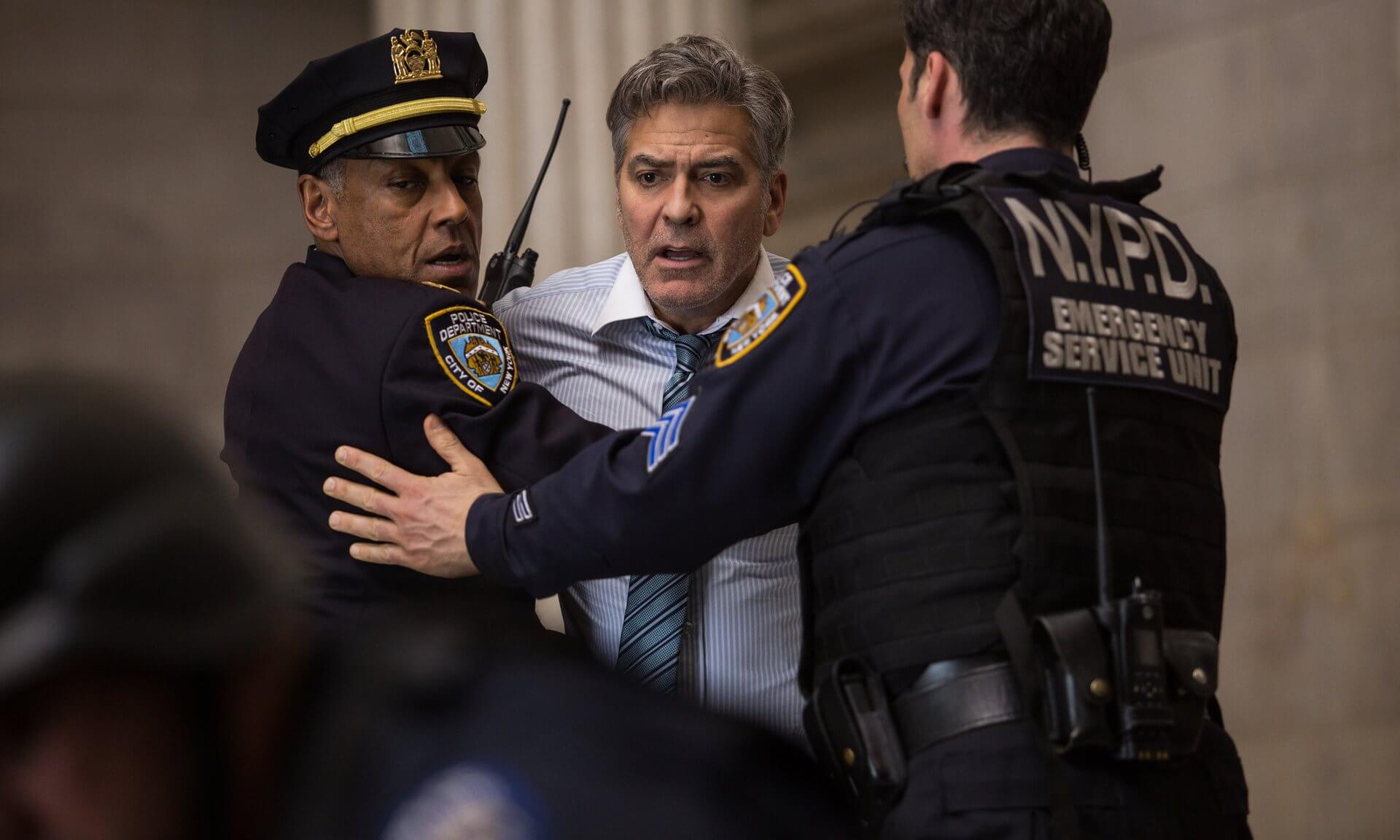Money Monster [2016] is about a financial TV host taken hostage by an upset investor.
Three’s A Crowd. A solid director, an all-star cast or even a familiar title can create enough buzz to ensure a profitable turnout. When a movie is cited as the director of a popular franchise or blockbuster, even non-cinephiles are going to become interested. Many people will flock to see Money Monster solely because it stars George Clooney and Julia Roberts. Sometimes a movie title is enough. In the case of 10 Cloverfield Lane, it seemed to generate a lot of interest without much regard to its real or fabricated connection to Matt Reeves’ 2008 Cloverfield. What rarely generates buzz for the average movie-goer are the more behind-the-scenes contributors. Cinematographers, writers, and producers can have just as much impact on a movie as directors, stars, and a possible legacy. If film is a living creature, the skeleton is made up of writers. A character is given a face and voice by an actor. The director pulls the appropriate emotions out of that actor, guiding them to be in line with the tone the film has set. But the words spoken by that actor, the actions they take and the reasons behind them are all due to a writer. While there are many exceptions, typically one writer is all it takes to create a classic film. Chinatown and Network were each written by only one person. The Godfather and Annie Hall were both written by two people. Money Monster cites three writers, and it’s fair to say from the moment production started that the goal was never to make a timeless classic that’s talked about decades later. So, what happens when we have too many writers working on a simplistic film? It can have inappropriate tonal shifts, a convoluted story or needless plot devices. While it’s not clear what contributions came from which writer, the end product is still the same: muddled. By the end of the movie it seemed plausible that one writer created an outline, another handled the plot details while the third wrote the dialogue. It begs the question: what was so complicated about this script that required three people to work on it?
Believe It...Or Not. The plot is direct and quick to begin. The pacing keeps the action up and the revelations coming at comfortable intervals. While the plot works on a ground level, as it builds up it becomes something slightly more silly (the best word I can use), predictable and cliche. The review is meant to be spoiler free, so I am not going to go into detail about the plot. But what I can say is that it’s more than simply a man in a studio holding a host hostage. What’s unfortunate is how utterly boring the rest of it becomes. The movie could be cut by about thirty minutes or so and had been about just a man in a studio with a gun. But there had to be more and once the ball starts rolling, it’s fairly obvious where it will end. This is 2016, and Occupy Wall Street was 2011. Considering the movie was originally in development in 2012, it’s no wonder a lot of the content involves the average Joe being taken advantage of by the 1%. But who needs this information now? Is anybody watching this movie going to walk out with a fresh perspective regarding the wage gap or the general inequality of classes in America today? It doesn’t quite feel dated, but it feels behind. It’s missing the mark in the sense that what it what’s to convey, the core message, has not only been said but has been protested very recently with no major outcome. It’s like making a movie about Kim Davis in 2019. What’s worse is that some moments in the movie reach a level of implausibility that it virtually breaks any submersion one might have. It’s the kind of behavior that leads an audience member to say “I refuse to believe this would happen,” because it wouldn’t. The movie’s biggest failure is that it has great performances and tight direction despite the lackluster script.
What Monster? George Clooney and Julia Roberts. They are powerhouse actors capable of making or breaking a film’s success by name alone, and here they don’t disappoint. Their rapport feels authentic, Roberts’ professionalism feels genuine and Clooney is as convincing as a sleazy personality as he’s been as a charming bachelor. It’s easy to care for them and their crew as well. But the real star here is Jack O’Connell. His portrayal of the everyman tired of taking one step forward and two steps back strikes an uncanny resemblance to the real thing. His frustration, his inability to accept PR doublespeak, his unfiltered rage, and his eventual sadness are relatable and easy to sympathize with. One of the major downfalls of the movie is how it turns the story from O’Connell’s to Clooney’s and then to Dominic West’s. Before too long the movie only needs to use O’Connell as a device to further the story, his story never really complete, as it’s really not about him but about something larger. And that’s really a shame because while the movie may focus on something far more sinister, it’s far blander when the gears start turning in all the characters heads. The audience doesn’t have to turn their gears to know what’s coming. Our gears have been locked in place with this kind of situation for years and years…
Money Monster cranks out some competent direction and solid performances but fails to command an emotional response. Instead, it asks for one.

